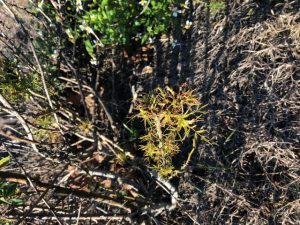Last Updated on July 22, 2020 by Yuvraj
There is a growing controversy over potential health risks associated with the herbicide glyphosate, the active ingredient in RoundUp®. Following extensive study, the United States Environmental Protection Agency (EPA), along with many other agencies, has maintained its findings that “glyphosate poses no risks to public health when used in accordance with its current label instructions” (US EPA 2019). Despite these findings, many people are concerned about possible health or environmental risks. These concerns have led to bans on glyphosate use on public property in several Florida counties and customers or homeowners becoming hesitant to have it applied to their property.
Glyphosate is currently the most applied postemergence herbicide in planting beds and other nonturf areas of residential and commercial landscapes in Florida. Glyphosate is a systemic/translocated herbicide, meaning that it moves within the plant tissues from the treated leaves, stems, and so on down to the roots. Because glyphosate is translocated throughout the weed, it is effective on most annual and perennial weeds. With one herbicide, an applicator can control almost all common broadleaf, grass, and sedge weeds in Florida landscapes.

Because glyphosate is so effective, it is often used as a “stand-alone” tool, which is not recommended. Any pest-control strategy should be integrated, meaning that a variety of tools are used to manage pests in a responsible manner. One herbicide should not be overly relied upon for control due to risks of resistance development, along with a host of other concerns that may arise from an environmental or plant safety standpoint.
For more information on glyphosate and other alternative methods to control weed, including specific recommendations, please consult Use of Glyphosate and Herbicide Alternatives for Weed Control in Florida Landscape Planting Beds
 0
0
